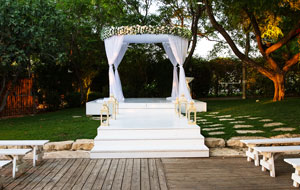By Naqiba Aslam
It’s already hard to be with someone when they’re from a different culture to yours. The question is, when you’ve gone through the hardship that surrounds being together, how on earth do you accommodate different cultures for your wedding?
Well, the first thing you might want to consider is if you’re happy to adopt their culture in to your own. If that’s a yes, fab! Now you need to research or even just ask your partner; what happens in their ceremony?
Being in a relationship is about giving and taking and that’s exactly how this should be. Want a white wedding? Go for it, just be sure to include your partners ceremonial steps. Here’s a few things which happen in other cultures weddings.
If your partner is Jewish, try thinking about:
Vows under the Chuppah
A Chuppah has 4 standing corners with a roof on top, which symbolizes the bride and groom building their home together. This can be a freestanding structure and ca n be decorated with alluring flowers to make it aesthetically pleasing.
n be decorated with alluring flowers to make it aesthetically pleasing.
Circling
The bride traditionally circles behind the groom, under the Chuppah, either three or seven times. This is believed to build a magical wall against evil spirits and even temptations, and can also be considered as the bride creating a new family circle.
If your partner is Muslim, try thinking about:
Nikah
The marriage contract is signed in a Nikah ceremony. The groom proposes to the bride in front of at least two witnesses and the bride and groom demonstrate their free will towards this marriage by saying ‘Kabul’ (which means ‘I accept’) three times. This is then followed by signing the contract and the bride and groom then share a piece of sweet fruit.
Days Surrounding the Nikah
The days surrounding the Nikah are often filled with lively parties, with lots of music, dancing and food. These are also very colourful events, so white isn’t traditionally used.
If your partner is Hindu, try thinking about:
Grahashanti
Before the wedding begins, the nine planets are invoked to give blessings to the new couple.
Hastamilap
This part of the wedding ceremony is the joining of the bride and groom’s hands. The bride’s right hand is placed on the groom’s right hand and tied with a cotton thread several times, whilst the priest prays. The knotting of the thread several times symbolizes an unbreakable bond.
These beautiful ceremonies will no doubt make your wedding day extra special, for both you and your partner.


Add new comment